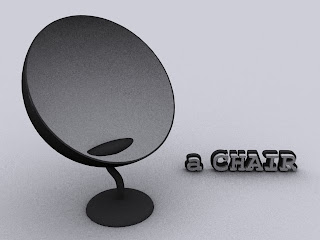User Interface
I'm sure that 90% of After Effects compositors have read this book - Adobe After Effects Studio Techniques. It's great, it's complex and it explains everything, from the very basics of Making the most of UI to Advanced Compositing and Expressions. I like writing notes when learning and since I keep them in my computer, I'm posting them here. I'm sure you'll find at least one thing you didn't know.
- To make any panel in your worspace float (just like in the old 6.5 version) pres CTRL and drag it from its position (it's good f.ex. for Tracker Controls and Render Queue).
- The Lock icon on the top of the active Tab (f.ex. Effect Control) prevents this Tab from closing when you select another layer.
- The ` key (backslash, bellow Esc) brings the selected window into a fullscreen. For normal size hit it again.
- Ctrl + ` = opens all the pull-down panel menus of the layer.
- Ctrl + [ = puts the selected layer down in the timeline, Ctrl + ] puts it up.
- To reset absolutely ALL PREFERENCES (including your Workspaces) hold down CTRL + SHIFT + ALT at startup.
- If you're working with a lot of files, solids and comps in your Project menu, some of them are missing and you can't find those (or you just want to spare some time), hit the binoculars icon in the bottom left corner of the Project window and check the Find Missing Footage.
- If you need to make some changes in a file you're using in your project - say a Photoshop composition - just highlight this file in your Project window, hit CTRL + E. The file opens in the program it was created (in our case Adobe Photoshop), you make the changes, save the file and After Effects will automaticly register the change.
- Ideal way to export your whole project with all the files included is to use File -> Collect Files option. This way you can store everything you need for working with the project in one folder. You just choose if you want to store everything, or only the things used in compositions, only the things used for final render etc. Very handy for transporting projects to different computers.
- If you want to quickly remove all the files you don't use in your compositions, just highlight this comp in your Project window and then hit File -> Reduce Project.
- If you hit File -> Consolidate All Footage, you delete the files that are uploaded multiple times in the Project window, leaving just one.
- If you hit File -> Remove Unused Footage, you remove from the Project Window anything that is not used in any composition.
- You're working on some important project, you've done a great job so far, but you want to make some changes that may end up ruining everything. In this case you may use the File -> Increment and Save option. This way you save your project and every time you hit Increment and save again, you create another copy of the saved project with a sequence number added.
- Enable Auto-save option in Edit -> Preferences -> Auto-save. The default numbers are ok.
This was the first part of what I plan to be a series of useful tips extracted from this great book by Mark Christiansen.
- Martin
 I am proud to announce that I've become a part of the Threads of Destiny postproduction team as a 2D compositor. This independent movie from Sweden is currently one of the most anticipated Star Wars fanfilms in production.
I am proud to announce that I've become a part of the Threads of Destiny postproduction team as a 2D compositor. This independent movie from Sweden is currently one of the most anticipated Star Wars fanfilms in production. 




_1.jpg)